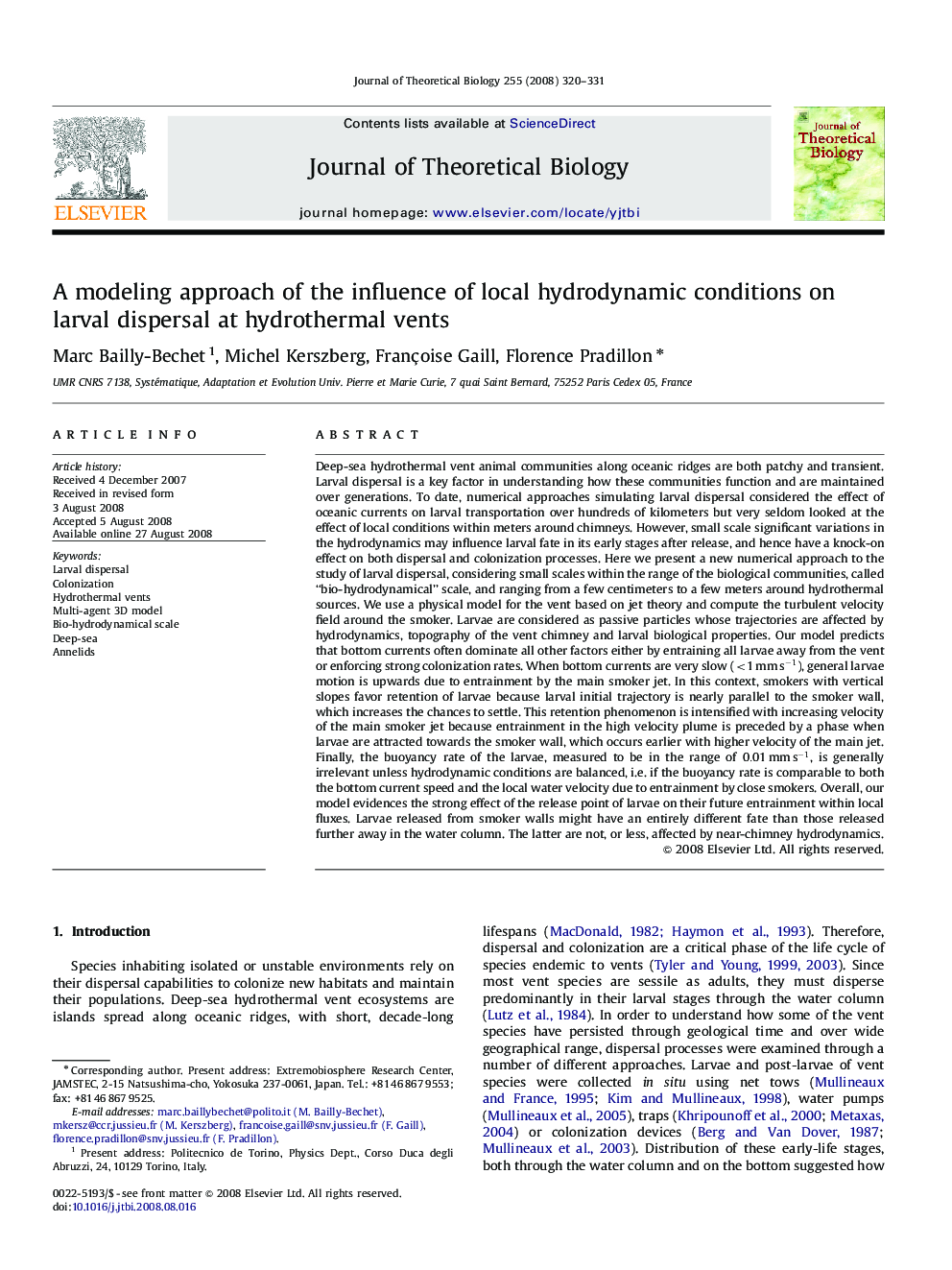| کد مقاله | کد نشریه | سال انتشار | مقاله انگلیسی | نسخه تمام متن |
|---|---|---|---|---|
| 4498202 | 1318969 | 2008 | 12 صفحه PDF | دانلود رایگان |
عنوان انگلیسی مقاله ISI
A modeling approach of the influence of local hydrodynamic conditions on larval dispersal at hydrothermal vents
دانلود مقاله + سفارش ترجمه
دانلود مقاله ISI انگلیسی
رایگان برای ایرانیان
کلمات کلیدی
موضوعات مرتبط
علوم زیستی و بیوفناوری
علوم کشاورزی و بیولوژیک
علوم کشاورزی و بیولوژیک (عمومی)
پیش نمایش صفحه اول مقاله

چکیده انگلیسی
Deep-sea hydrothermal vent animal communities along oceanic ridges are both patchy and transient. Larval dispersal is a key factor in understanding how these communities function and are maintained over generations. To date, numerical approaches simulating larval dispersal considered the effect of oceanic currents on larval transportation over hundreds of kilometers but very seldom looked at the effect of local conditions within meters around chimneys. However, small scale significant variations in the hydrodynamics may influence larval fate in its early stages after release, and hence have a knock-on effect on both dispersal and colonization processes. Here we present a new numerical approach to the study of larval dispersal, considering small scales within the range of the biological communities, called “bio-hydrodynamical” scale, and ranging from a few centimeters to a few meters around hydrothermal sources. We use a physical model for the vent based on jet theory and compute the turbulent velocity field around the smoker. Larvae are considered as passive particles whose trajectories are affected by hydrodynamics, topography of the vent chimney and larval biological properties. Our model predicts that bottom currents often dominate all other factors either by entraining all larvae away from the vent or enforcing strong colonization rates. When bottom currents are very slow (<1mms-1), general larvae motion is upwards due to entrainment by the main smoker jet. In this context, smokers with vertical slopes favor retention of larvae because larval initial trajectory is nearly parallel to the smoker wall, which increases the chances to settle. This retention phenomenon is intensified with increasing velocity of the main smoker jet because entrainment in the high velocity plume is preceded by a phase when larvae are attracted towards the smoker wall, which occurs earlier with higher velocity of the main jet. Finally, the buoyancy rate of the larvae, measured to be in the range of 0.01mms-1, is generally irrelevant unless hydrodynamic conditions are balanced, i.e. if the buoyancy rate is comparable to both the bottom current speed and the local water velocity due to entrainment by close smokers. Overall, our model evidences the strong effect of the release point of larvae on their future entrainment within local fluxes. Larvae released from smoker walls might have an entirely different fate than those released further away in the water column. The latter are not, or less, affected by near-chimney hydrodynamics.
ناشر
Database: Elsevier - ScienceDirect (ساینس دایرکت)
Journal: Journal of Theoretical Biology - Volume 255, Issue 3, 7 December 2008, Pages 320-331
Journal: Journal of Theoretical Biology - Volume 255, Issue 3, 7 December 2008, Pages 320-331
نویسندگان
Marc Bailly-Bechet, Michel Kerszberg, Françoise Gaill, Florence Pradillon,